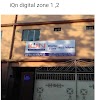upsc ies Recruitment syllabus,
Post dateDATED : 11.08.2020
(LAST DATE : 01.09.2020)
INDIAN ECONOMIC SERVICE EXAMINATION, 2020
Last Date Fee Payment : 01/09/2020
Exam Date : 16/10/2020
Admit Card Available : October 2020
How to apply:-
Candidates are required to apply Online using the https://www.upsconline.nic.in
Detailed instructions for filling up Online Applications are available on the above-mentioned
website.
(b) The applicants are advised to submit only single application. However, if due to any
unavoidable situation, he/she submits another/multiple applications, then he/she must
ensure that application with the higher RID is complete in all respects like applicants
details, examination centre, photograph, signature, fee etc. The applicants who are
submitting multiple applications should note that only the applications with higher RID
(Registration ID) shall be entertained by the Commission and fee paid against one RID shall
not be adjusted against any other RID.
(c) All candidates, whether already in Government Service, or in Government owned
industrial undertakings or other similar organizations or in private employment should
submit their applications direct to the Commission. Persons already in Government
service, whether in a permanent or temporary capacity or as work charged employees other
than casual or daily rated employees or those serving under Public Enterprises are however,
required to inform in writing their Head of Office/ Department that they have applied for
the Examination.
Candidates should note that in case a communication is received from their employer by
the Commission withholding permission to the candidates applying for/appearing at the
examination, their applications will be liable to be rejected/candidature will be liable to be
cancelled.
NOTE-1 : While filling in his/her application form, the candidate should carefully decide
about his/her choice for the centre for the Examination.
If any candidate appears at a centre other than the one indicated by the Commission
in his/her e-Admission Certificate, the papers of such a candidate will not be
evaluated and his/her candidature will be liable to cancellation.
NOTE-2: Incomplete or defective applications shall be summarily rejected. No
representation or correspondence regarding such rejection shall be entertained under a
No. Marks Allowed
1. General English 100 ,3 hrs.
2. General Studies 100 ,3 hrs.
3,General Economics-I 200 ,3 hrs.
4. General Economics-II 200 ,3 hrs.
5. General Economics-III 200, 3 hrs.
6. Indian Economics 200, 3 hrs.
INDIAN ECONOMICS
1. History of development and planning— Alternative development strategies—goal
of self-reliance based on import substitution and protection, the post-1991 globalisation
strategies based on stabilisation and structural adjustment packages: fiscal reforms,
financial sector reforms and trade reforms.
2. Federal Finance—Constitutional provisions relating to fiscal and financial powers of
the States, Finance Commissions and their formulae for sharing taxes, Financial aspect of
Sarkaria Commission Report, financial aspects of 73rd and 74th Constitutional
Amendments.
3. Budgeting and Fiscal Policy—Tax, expenditure, budgetary deficits, pension and
fiscal reforms, Public debt management and reforms, Fiscal Responsibility and Budget
Management (FRBM) Act, Black money and Parallel economy in India—definition,
estimates, genesis, consequences and remedies.
4. Poverty, Unemployment and Human Development—Estimates of inequality and
poverty measures for India, appraisal of Government measures, India’s human development
record in global perspective. India’s population policy and development.
5. Agriculture and Rural Development Strategies— Technologies and institutions,
land relations and land reforms, rural credit, modern farm inputs and marketing— price
policy and subsidies; commercialisation and diversification. Rural development programmes
including poverty alleviation programmes, development of economic and social
infrastructure and New Rural Employment Guarantee Scheme.
6. India’s experience with Urbanisation and Migration—Different types of migratory
flows and their impact on the economies of their origin and destination, the process of
growth of urban settlements; urban development strategies.
7. Industry: Strategy of industrial development— Industrial Policy Reform;
Reservation Policy relating to small scale industries. Competition policy, Sources of
industrial finances. Bank, share market, insurance companies, pension funds, non-banking
sources and foreign direct investment, role of foreign capital for direct investment and
portfolio investment, Public sector reform, privatisation and disinvestment.
8. Labour—Employment, unemployment and underemployment, industrial relations
and labour welfare— strategies for employment generation—Urban labour market and
informal sector employment, Report of National Commission on Labour, Social issues,
relating to labour e.g. Child Labour, Bonded Labour International Labour Standard and its
impact.
9. Foreign trade—Salient features of India’s foreign trade, composition, direction and
organisation of trade, recent changes in trade, balance of payments, tariff policy, exchange
rate, India and WTO requirements. Bilateral Trade Agreements and their implications.
10. Money and Banking—Financial sector reforms, Organisation of India’s money
market, changing roles of the Reserve Bank of India, commercial banks, development
finance institutions, foreign banks and non-banking financial institutions, Indian capital
market and SEBI, Development in Global Financial Market and its relationship with Indian
Financial Sector. Commodity Market in India-Spot and Futures Market, Role of FMC.
11. Inflation—Definition, trends, estimates, consequences and remedies (control):
Wholesale Price Index. Consumer Price Index: components and tren,





0 Comments